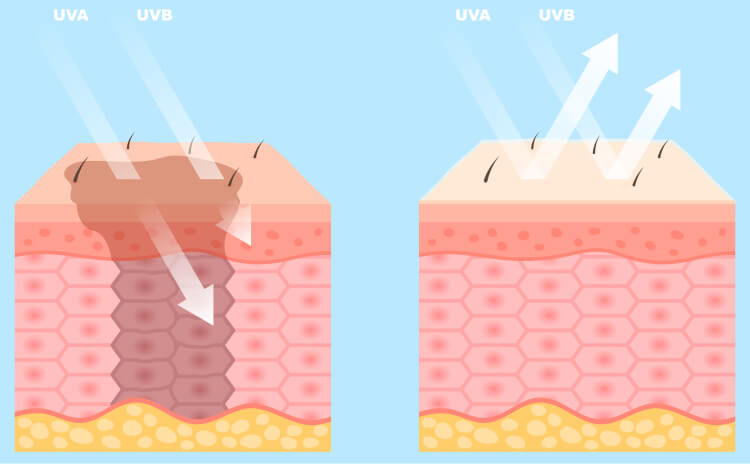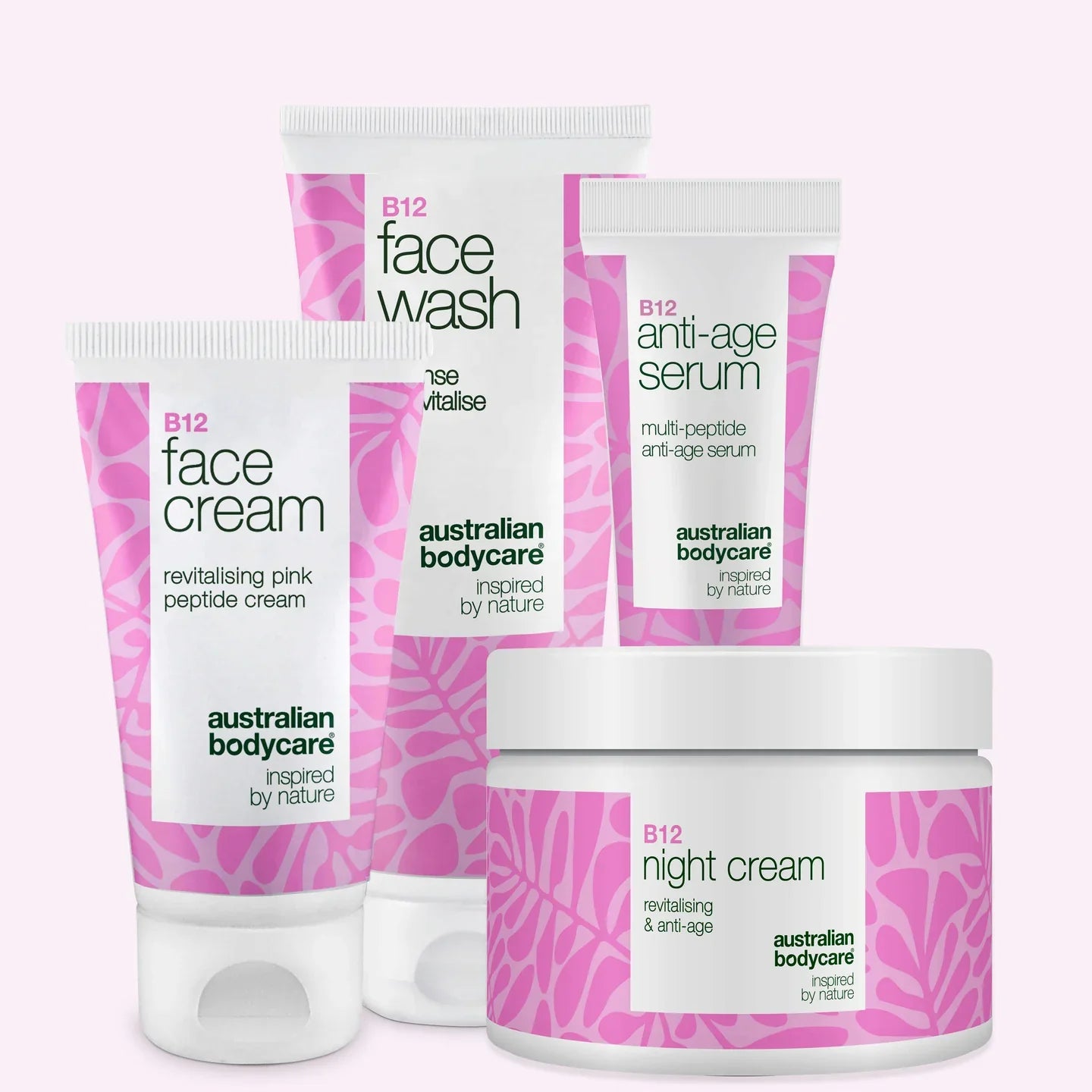The Difference Between UVA and UVB Rays: What You Need to Know
Sunlight impacts us daily, but not all rays are the same. UVA and UVB rays play different roles when it comes to our skin, and it's crucial to know the differences between these types of solar radiation to protect ourselves properly.
Table of contents
What are UVA and UVB Rays?
UVA and UVB rays are two types of ultraviolet light that reach the Earth's surface from the sun. UVA rays have longer wavelengths, while UVB rays have shorter wavelengths. Both types can harm the skin, but they affect it differently; UVA rays penetrate deeper into the skin and can cause aging, while UVB rays are primarily responsible for sunburns and increase the risk of skin cancer.
Definition and Characteristics
Both UVA and UVB rays are part of the sun’s ultraviolet light that hits the Earth. UVA rays make up the majority and can penetrate through clouds and glass. These rays reach deep into the skin and contribute to aging and can damage deeper skin layers.
UVB rays, on the other hand, are fewer but more intense. They hit the skin's surface and are the main cause of sunburn. Both types play a role in the development of skin cancer.

The UV index describes the strength of the sun’s ultraviolet light, and the higher the number, the greater the risk of skin damage.
The ozone layer protects us by stopping all UVC rays and some of the UVB rays, but not UVA rays. This makes it crucial to protect against the effects of UVA and UVB rays.
Sunscreen with high SPF and broad-spectrum protection shields against both types of rays and reduces the risk of skin damage.
Similarities and Differences
To understand how to protect your skin from the sun's damage, we first need to know the differences and similarities between UVA and UVB rays. Both types contribute to the risk of skin damage and skin cancer, but they do it in different ways.
| Similarities | Differences |
|---|---|
| Both can damage skin | UVA rays are present all year |
| Both increase the risk of skin cancer | UVB rays are stronger in summer |
| Both can cause photoaging | UVA rays penetrate deeper into the skin |
| Both can damage the skin’s DNA | UVB rays more often cause sunburn |
This table shows that while UVA and UVB rays share some harmful effects, there are significant differences in their presence and impact on the skin. UVA rays, present throughout the year and able to penetrate deeply into the skin, contribute to long-term damage such as wrinkles and aging. UVB rays, on the other hand, are most intense in the summer and are the primary causes of sunburn. These differences underscore the need for protection against both types of rays to reduce the risk of skin damage and skin cancer.
Risks of UVA and UVB Rays
UVA and UVB rays can cause sunburn, which can lead to redness, pain, and in severe cases, blistering on the skin. Prolonged exposure to these rays also increases the risk of developing various forms of skin cancer, including melanoma.
Sunburn and Its Consequences
Sunburn occurs when the skin is exposed to too much sunlight. It can make the skin red, sore, and sometimes cause it to peel. The sun emits UV rays that can damage the top layer of the skin.
This often leads to pain and, in severe cases, blisters. Over time, repeated sunburns can increase the risk of skin cancer, especially melanoma. It's crucial to protect your skin from the sun's rays to avoid these consequences.
Too much UV radiation can also accelerate the skin's aging process. This means the skin may begin to look old long before its time. Wrinkles, leathery skin, and other signs of aging can become more pronounced.
To keep the skin healthy and avoid these damages, it's crucial to use protection such as sunscreen, hats, and clothing that covers the body when outdoors.
Skin Cancer and Its Various Forms
UV rays can cause skin cancer, which can manifest in various ways. The most common forms of skin cancer include basal cell carcinoma, squamous cell carcinoma, and melanoma.
These forms arise due to DNA damage caused by UV rays, leading to abnormal growth of skin cells. It's important to be vigilant about changes in the skin such as new moles or sores, as early detection of skin cancer can increase the chances of effective treatment and recovery.
Melanoma is the most dangerous form of skin cancer and has the potential to spread to other parts of the body. Basal cell carcinoma is the most common type of skin cancer and develops slowly, while squamous cell carcinoma often has a noticeable lump or sore and will rarely spread to other areas of the body.
Aging of the Skin
UVA rays cause photoaging of the skin, meaning they can lead to wrinkles, pigmentation changes, and sagging skin. These rays penetrate deep into the skin, breaking down collagen and elastin fibers, resulting in older-looking skin.
The harmful effects of the sun can also lead to a loss of elasticity and firmness, contributing to the aging process. Therefore, it's crucial to protect against UVA rays to maintain the skin's youthful appearance and health.
The aging of the skin is exacerbated by UVB rays, which cause sunburn. Prolonged exposure to UVB rays can lead to the formation of wrinkles and pigmentation changes. These rays can also result in sun allergy and sun intolerance, both of which have negative effects on the skin's appearance and health.
Protection Against UVA and UVB Rays
Protecting against UVA and UVB rays is essential to prevent skin damage. Sunscreen with high SPF and broad-spectrum protection is crucial for blocking harmful rays and reducing the risk of sunburn and skin cancer.
The Importance of Broad-Spectrum Protection
Broad-spectrum protection is vital to shield the skin from both UVA and UVB rays. This ensures that the skin is protected from age-related changes, pigmentation alterations, and the development of various forms of skin cancer from UVA rays, as well as burns, allergic reactions, and skin cancer from UVB rays.
High SPF sunscreen, UV-protected sunglasses, and clothing with built-in UV protection are effective tools for achieving broad-spectrum protection, which is essential for maintaining healthy and protected skin against the harmful effects of UV rays.
Protection against broad-spectrum sun damage is crucial, as it can prevent early signs of aging and protect against the risk of skin cancer. By choosing sun protection products with broad-spectrum protection and applying them regularly, one can ensure an effective barrier against harmful UV rays and achieve healthier, more resilient skin.
Choosing High SPF Sunscreen
When it comes to choosing a high SPF sunscreen, it's important to pick the right one to protect your skin from harmful solar radiation. Here are some considerations and tips:
1. Choose a broad-spectrum sunscreen that protects against both UVA and UVB rays for comprehensive coverage.
2. Opt for a sunscreen with an SPF value of at least 30 for effective protection against harmful UV rays.
3. Avoid products with ingredients like oxybenzone and octinoxate, as they can be harmful to you and the environment.
4. Apply sunscreen generously, especially if you will be outdoors for an extended period, and remember to reapply every 2 hours or after sweating or swimming.
5. Look for water-resistant sunscreen if you plan activities at the pool or beach.
Making the right choices regarding your sunscreen can help keep your skin healthy and protected from the negative effects of UV radiation.
Sunglasses with UV Protection
Sunglasses with UV protection are crucial for protecting the eyes from harmful UVA and UVB rays. UV-protected sunglasses can prevent eye damage caused by these harmful rays and reduce the risk of eye disorders. Here are some important facts to keep in mind when it comes to UV-protected sunglasses:
1. Sunglasses with 100% UV protection block both UVA and UVB rays, reducing the risk of cataracts, macular degeneration, and other eye problems.
2. Choose sunglasses that filter 75-90% of visible light and offer good contrast and color enhancement.
3. Sunglasses with polarized lenses help reduce glare from reflective surfaces such as water, snow, and roads, providing better visual clarity.
4. Children should also wear sunglasses with 100% UV protection, as their eyes are more sensitive to damage from the sun's rays.
These guidelines can help you choose the right sunglasses with effective UV protection to keep your eyes healthy in the sun.
Clothing with UV Protection
Clothing with UV protection is an effective tool for protecting the skin from harmful UVA and UVB rays, which can help reduce the risk of sunburn, skin cancer, and other sun-related damages. Here are some important things you should know about clothing with UV protection:
1. Tight Weave: Choose clothing with a tight weave, as this helps block UV rays from penetrating through and reaching the skin.
2. Dark Colors: Dark colors such as navy, black, or dark brown absorb more UV light than light colors, providing extra protection against the sun’s harmful rays.
3. Built-in Protection: Some brands offer clothing with built-in or treated UV protection, which can be ideal for outdoor activities or travel.
4. Complete Coverage: Long-sleeved shirts, pants, skirts, and wide hats help provide more comprehensive protection of the body from the sun’s rays.
5. Maintenance of Protection: Clothing with UV protection gradually loses its effectiveness after repeated use; it is therefore recommended to follow the manufacturer's instructions for maintaining this type of clothing.
Integrating protective clothing into your sun protection routine can help you maintain the health of your skin and reduce the effects of harmful UV exposure.
Conclusion: The Importance of Protecting Against UVA and UVB Rays
Protecting against UVA and UVB rays is essential to prevent skin damage. High SPF sunscreen can minimize the risk of sunburn and sun-damaged skin. Broad-spectrum protection is necessary to block both UVA and UVB rays.
Sunglasses with UV protection and clothing with built-in UV protection also help shield the skin from harmful rays. Appropriate measures are necessary, especially in areas with a high UV index, to maintain healthy and protected skin.
FAQ
What is the difference between UVA and UVB rays?
UVA rays (ultraviolet A) penetrate deep into the skin and can lead to premature aging, while UVB rays (ultraviolet B) affect the skin's surface and can cause sunburn. Both types of ultraviolet rays contribute to the risk of skin cancer.
How do UVA and UVB rays affect the skin?
UVA rays can break down melanin and promote skin aging, while UVB rays can damage the outer layer of the skin and induce sunburn. Prolonged exposure to both types of rays increases the risk of skin cancer.
Can we protect ourselves from UVA and UVB rays?
Yes, by using sunscreen with high UV index protection that covers both UVA and UVB rays, wearing sun-protective clothing, and seeking shade, we can reduce our exposure to these harmful rays.
Why is it important to know the difference between UVA and UVB rays?
Understanding the difference helps us better protect our skin from the harmful effects of solar radiation, including premature aging and skin cancer, by choosing the right protective methods.
Do UVA and UVB rays only affect human skin?
No, UVA and UVB rays can also affect other living organisms and degrade materials such as plastics and fabrics over time. It is important to protect both ourselves and our belongings from these rays.



